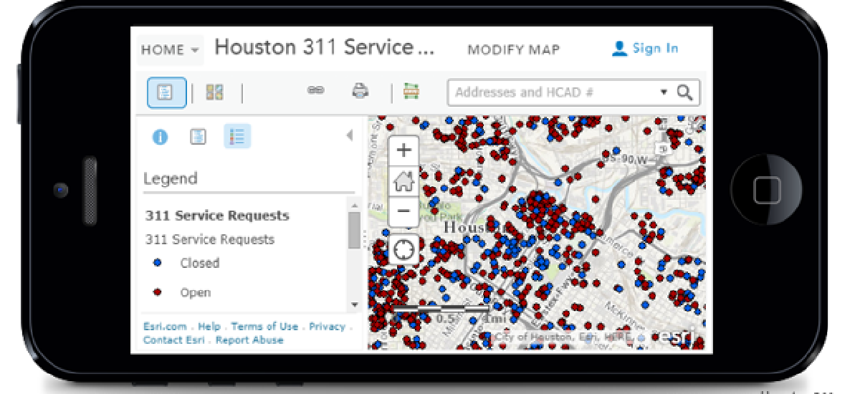Houston joins migration to enhanced 311 services

Houston has expanded the city’s 311 non-emergency reporting system from a telephony-based network to one that now supports email, a web mobile app and heat maps of citizen calls.
City managers in Houston are getting assistance managing the surge of citizen queries and service requests with the expansion of the city’s 311 non-emergency system from a telephony-based network to one that now incorporates email, the web and a mobile app.
Using a system from customer relationship management (CRM) firm KANA, city officials are now able to automate work order requests and eliminate steps in responding to calls that often eat up limited time, money and personnel resources.
With the app or website, the citizen becomes an agent on his own behalf. “It’s a force multiplier for us because it bypasses agents altogether and goes back to the department that’s going to handle that problem,” said Frank Carmody, assistant director of 311 management for the city.
City departments now have options in how they want to use the customer management system. About eight departments use Kana to link directly to back office systems, according to Carmody.
In one use case, requests are entered into KANA directly by a citizen or from an agent answering a phone call. A work order is then automatically created. Once the job or tasks is completed, officials close the order, and KANA updates the whole system.
“All we’re really doing is telling them, ‘you have a problem and here’s where the problem is,’ and of course they have a deadline to fill it,” Carmody said.
The Solid Waste Management Department uses the system differently. It picks up orders directly from 311 and uses KANA to prioritize them.
“We send them an automated report every day,” Carmody said. “It tells them those service requests that are within two days of their deadlines, and that helps them organize their work for the day.”
In addition to creating work orders, Houston 311 has about 2,600 frequently asked questions in its database, providing quick answers to inquiries such as what time the library opens or what someone should do to take a defense driving course instead of paying a traffic fine.
Another feature is the Performance Dashboard, a repository of all the data KANA generates. It lets city managers create heat maps that show areas where potholes or graffiti are concentrated, for example.
“When you have that kind of thing, it can make your planning a whole lot easier because you’re not sending people where the potholes aren’t,” Carmody said.
Additionally, city council members can use the data to compare, for example, how long it takes to address service issues in each of their districts. Raw data is also available on the site for the public to use freely.
Departments needing after-hours help from the IT department can also contact 311 to use KANA. And Houston 311 officials are looking at integrating KANA with the General Services Department to help maintain the city’s 500 or 600 buildings and parks.
According to Carmody, there’s not a whole lot of functional difference between a citizen who calls in a pothole and someone running a library who needs the General Services Department to fix a leaky faucet.
When Houston migrated its existing CRM system to KANA about three years ago, the website was receiving about 20,000 hits a year, Today the site, which was recently scaled for use on smartphones, gets 300,000 hits.
Houston isn’t the only city adopting and expanding 311 services, which were first established in response to the overuse of 911 lines. In New York City, 311 users can text or Skype with agents or follow the service on social media such as Twitter, Facebook and Instagram. The MyLA 311 mobile app lets users pay water and electric bills or locate the nearest park, library, golf course or police station.
Benefits of adding web-based services to 311 programs continue to grow. The trend spawned Open311.org, for example, a website dedicated to helping build open interoperable systems that let residents more directly interact with their cities. Municipalities such as Washington, D.C.; Bonn, Germany; and Dunwoody, Ga., support the organization’s specifications.
“All these different systems really do make cities a whole lot more efficient,” Carmody said.





